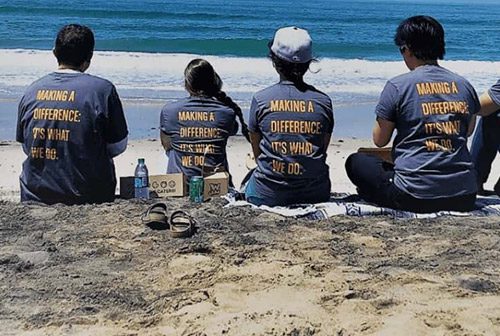Of San Diego’s eleven watersheds, the Tijuana River watershed is the largest. Most of it lies on the Mexican side of the border. It is also the watershed with some of the worst sewage pollution in our region. When you hear about Imperial Beach being closed because of high bacteria counts, it is a good bet that the sewage causing the problem came from Mexico. After years of squabbling over how to fix the problem – building the Bajagua treatment plant, upgrading other facilities – there seemed to be enough political drama to start a Mexican soap opera but no real solution to the problem. In April of this year, La Morita sewage treatment plant opened in Tijuana. This plant will treat much of the sewage in the Tijuana region and reclaim some of that treated wastewater for use in the irrigation of an adjacent nursery. The trees grown with that reclaimed water will be planted throughout Baja California. This plant is a big step towards being the first region in Mexico to treat 100% of its sewage.
Needless to say, it was with dismay that I read the news on Sunday that there had been an enormous spill – 2.1 million gallons of raw sewage – in the Tijuana River Valley at the beginning of June. Maybe more alarming than the spill itself is that none of it was captured by the International Boundary and Water Commission’s facility. The IWBC treatment facility was designed specifically to capture these types of flows. The foreign origin of the problem and the federal status of the IWBC facility have put this spill outside of the regulatory reach of the Regional Water Quality Control Board and it seems that in addition to no clean-up, there will be no real enforcement action either.
While news of this spill is a sad reminder of the many infrastructure problems of the border region, we need to stay focused on the positive steps that have been taken to remedy the problem. Less than ten years ago, it was not uncommon to open your morning newspaper to read a story about huge volumes of sewage flowing untreated into San Diego’s creeks and bays. These spills would leave behind a wake of pollution that fouled our shorelines and exposed surfers and swimmers to micro-organisms that can make people sick. In the face of government and regulatory inaction, groups like San Diego Coastkeeper stepped in with advocacy, including a lawsuit to force upgrades to our wastewater collection system. Since that time, we have seen a huge drop in sewage spills. So we know with enough pressure and will that change can happen.













